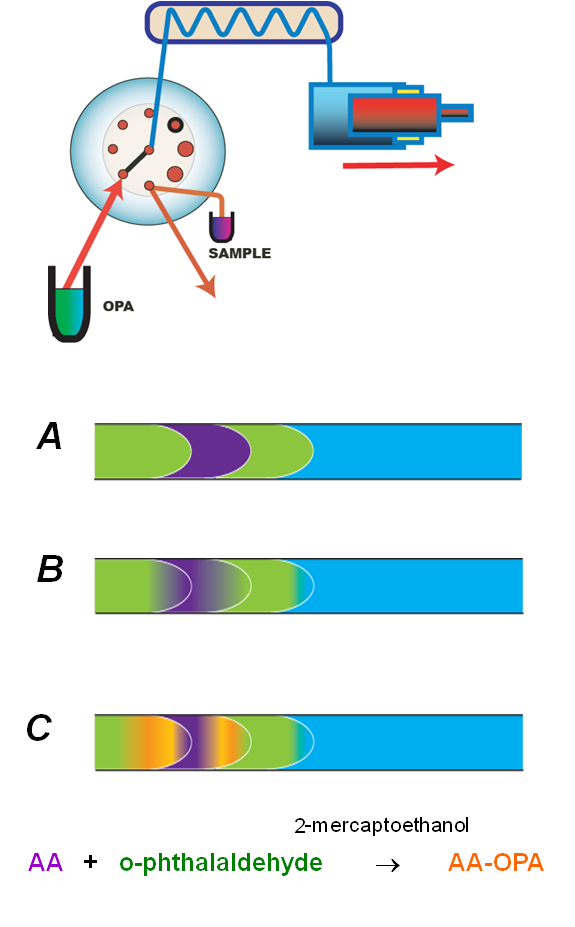Precolumn Derivatization
4.2.3.
The unique advantage of SIC is the ability to exploit the concentration gradients inherent in Sequential Injection methodology. As mentioned before, determination of amino acids by reversed-phase LC involves pre-column derivatization. A widely used reagent for this purpose is o-phthalaldehyde (OPA). SI-based precolumn OPA derivatization is done in the same way as the reagent based assays automated by SI described in Chapter 2.
Briefly, OP reagent, AA sample and OP reagent are sequentially aspirated into the holding coil (A). As the stacked zones move upstream, they mutually disperse (B) into a concentration gradient, and within a brief reaction time (1 min) the OPAA adduct is formed (C) in the holding coil.
Next, the valve is switched into a column position, and the reaction products are transferred and adsorbed on the column. Since OPA-amino acid adducts exhibit a wide range of hydrophobicities, the separation cannot be performed isocratically, and therefore gradient elution is necessary.
Next, an elution gradient has to be formed and applied, as described in the following section.










